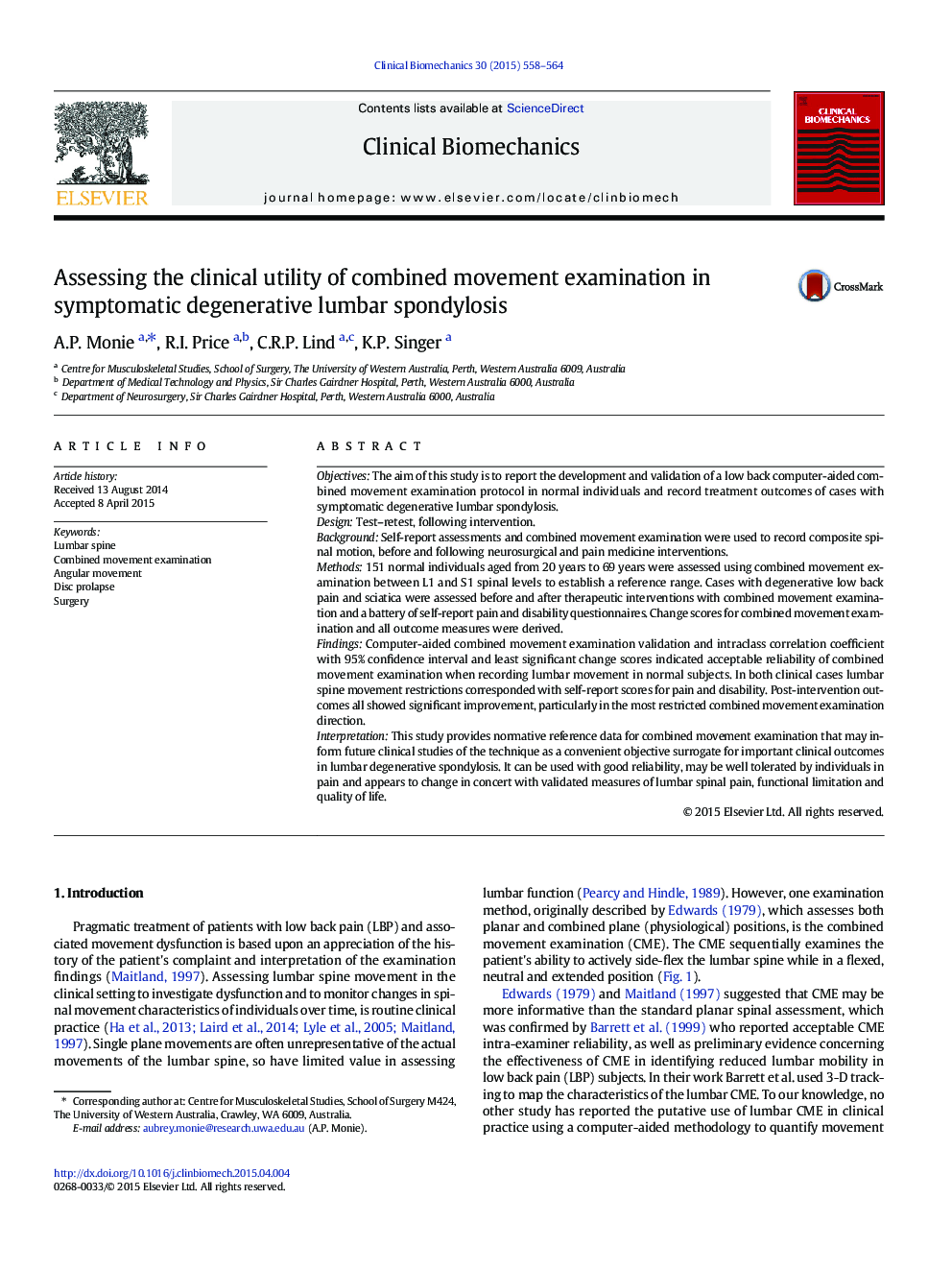| Article ID | Journal | Published Year | Pages | File Type |
|---|---|---|---|---|
| 4050238 | Clinical Biomechanics | 2015 | 7 Pages |
•Two acute cases of lumbar spondylosis examined before and after specialist intervention•Self-report questionnaires and lumbar 3-D motion tracking used to quantify the combined movement examination.•Combined movement examination highlighted movement restrictions consistent with pathology and restoration of motion.•Questionnaires revealed a marked decrease in pain and improved function post-intervention.•Combined movement examination may identify lumbar movement dysfunction and monitor changes based on a normal reference range.
ObjectivesThe aim of this study is to report the development and validation of a low back computer-aided combined movement examination protocol in normal individuals and record treatment outcomes of cases with symptomatic degenerative lumbar spondylosis.DesignTest–retest, following intervention.BackgroundSelf-report assessments and combined movement examination were used to record composite spinal motion, before and following neurosurgical and pain medicine interventions.Methods151 normal individuals aged from 20 years to 69 years were assessed using combined movement examination between L1 and S1 spinal levels to establish a reference range. Cases with degenerative low back pain and sciatica were assessed before and after therapeutic interventions with combined movement examination and a battery of self-report pain and disability questionnaires. Change scores for combined movement examination and all outcome measures were derived.FindingsComputer-aided combined movement examination validation and intraclass correlation coefficient with 95% confidence interval and least significant change scores indicated acceptable reliability of combined movement examination when recording lumbar movement in normal subjects. In both clinical cases lumbar spine movement restrictions corresponded with self-report scores for pain and disability. Post-intervention outcomes all showed significant improvement, particularly in the most restricted combined movement examination direction.InterpretationThis study provides normative reference data for combined movement examination that may inform future clinical studies of the technique as a convenient objective surrogate for important clinical outcomes in lumbar degenerative spondylosis. It can be used with good reliability, may be well tolerated by individuals in pain and appears to change in concert with validated measures of lumbar spinal pain, functional limitation and quality of life.
